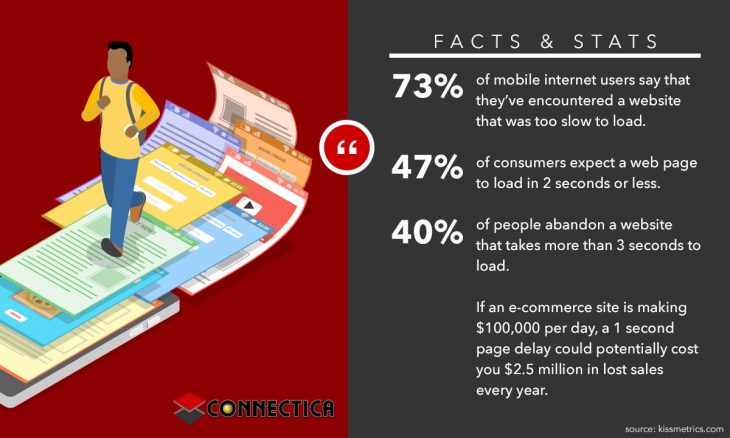MENUMENU
- Free SEO Report
- Services
- About
- Tech Talk
- Service Areas
- Contact Us
- 877-816-2259

Build a Website with Site Speed at its Core
Your website may be rich with great content, beautiful imagery, and excellent resources but the speed at which your website loads is one of the most significant factors that determines its success. The importance of a fast website is often overlooked but we cannot stress enough how vital it is to build a website that has site speed at the core of its design.
There are many reasons why site speed is such an important factor in website success, one being that Google’s algorithm for page ranking includes page speed as one of its signals. A slower Google page speed means that fewer pages will be crawled by search engines, which could have a negative effect in your indexation.
Another reason is of course the user experience. When pages load slower they tend to have a higher bounce rate. Simply put, this boils down to the fact that people who are used to instant service and information are becoming increasingly impatient if they can’t access what they need within a certain time span. According to a study that Microsoft conducted in 2015, the average attention span of people online is now 8 seconds. This information should signal why it is vital for web designers to understand the importance of a site speed when building a website.
Now that you understand the importance building a website with speed at the core of the design process, why not take a look at your own website and get started on improving its speed. Site speed is a necessity and could be the deciding factor between visitors browsing your website or moving on to your biggest rivals’. Here are three great tips to help improve your website speed:
1. Optimize your images.
This is a big one! Big images add to the size of your page and take a longer time to load, which ultimately decreases the speed of your website. While images are a great way to enhance your website, be sure to keep them optimized to ensure that your website speed is maximized. Remember that image compression shouldn’t affect the quality of the image – stick to JPEG formats to ensure good image quality!
2. Optimize your CSS
Your CSS or cascading style sheets load before people are able to access your site. The longer it takes for them to download your CSS, the longer they have to wait. By optimizing your style sheets your files will download faster, which will give your visitors quicker access to your website pages. Get rid of unnecessary code in your files to make them as small as possible. This can also be achieved through CSS minimization which will remove all the unwanted spaces in your files.
3. Enable browser caching
When you build a website, make sure that you enable browser caching because it will transform the user experience on your website. Browser caching means that website remembers resources that the browser has already loaded. This, in turn, means that when the visitor re-visits a page, the files do not need to load again. Browser caching will ensure that pages load much faster for repeat visitors, which will ultimately improve the overall speed of the website.
Stay up to date on industry news and receive promotions & special offers.
Don't worry we hate spam as much as you do.
Search Official Google Partner List
Connectica LLC
8499 West Commercial Blvd
Tamarac,
FL 33351
Toll Free: 1-877-816-2259
Local: 954-282-1698